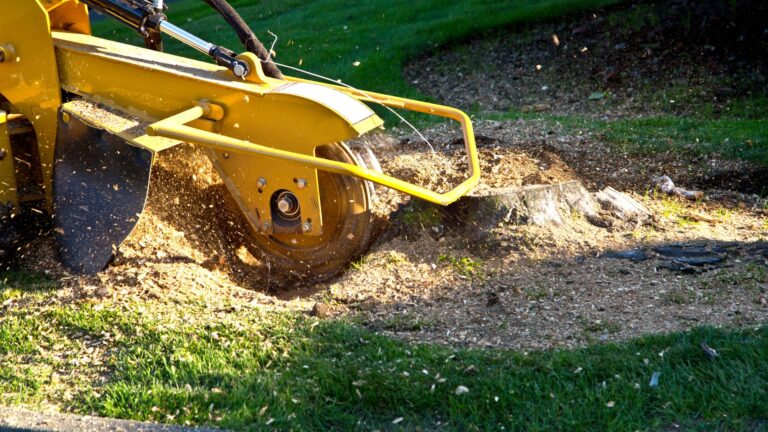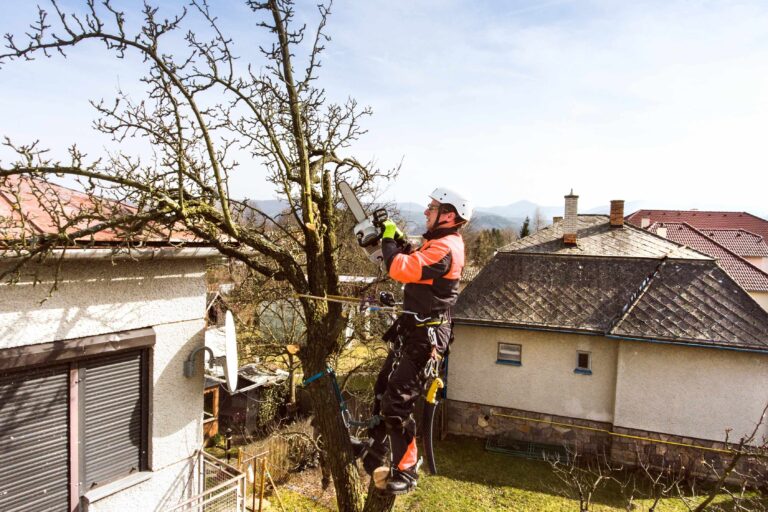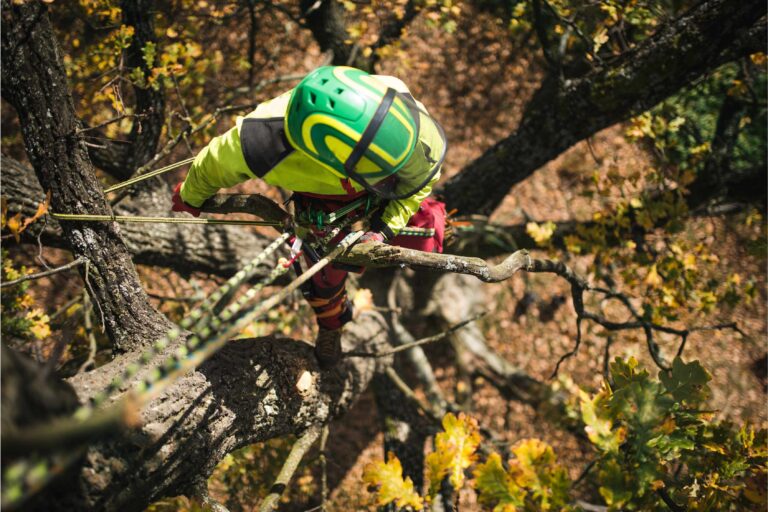In this comprehensive guide, we will delve into the world of stump removal and tree root removal services. Stumps and tree roots can be eyesores on our properties, but they also pose certain risks and hinder landscaping efforts. Understanding the importance of stump and tree root removal is crucial in maintaining the beauty and safety of our outdoor spaces.
Understanding Stump and Tree Root Removal
Stumps and tree roots left unaddressed can lead to various problems. They can become tripping hazards, causing injuries to people and pets. They can also get in the way of mowing or landscaping activities, making it difficult to achieve a polished and well-maintained appearance. Moreover, decaying stumps and tree roots can attract pests like termites and ants, which can eventually infest your property. To prevent these issues, it is essential to remove stumps and tree roots properly.
The Importance of Stump and Tree Root Removal
Stump and tree root removal not only enhances the aesthetics of your outdoor space but also improves its functionality. By removing stumps and tree roots, you eliminate the risk of accidents and injuries, creating a safer environment for everyone.
Additionally, removing stumps and tree roots allows for proper landscaping and opens up space for activities like gardening or the installation of outdoor structures. It also prevents the growth of new shoots from the stumps, maintaining the overall health of your landscape.
The Process of Stump and Tree Root Removal
Stump and tree root removal involves several steps. First, an assessment of the area is conducted to determine the size and condition of the stumps and tree roots. This assessment helps in selecting the appropriate removal technique.
One popular technique is the grinding method. This involves using a stump grinder to grind the stump into wood chips. The grinding process eliminates the visible portion of the stump, allowing for easy removal and soil leveling.
Alternatively, chemical stump removal can be used. This method involves the application of chemical solutions to the stump, which accelerates the rotting process. Once the stump decays, it can be easily removed.
For smaller stumps, manual removal techniques such as digging or uprooting may be employed. These methods require physical labor and the use of tools like shovels, axes, or even a truck to pull out the stump.
When it comes to stump and tree root removal, it’s important to consider the potential impact on the surrounding environment. The removal process can disturb the soil and disrupt the natural ecosystem. However, with proper planning and care, these impacts can be minimized.
Before starting the removal process, it’s crucial to check for any underground utilities, such as gas lines or electrical cables, to avoid any accidents or damage. Consulting with a professional arborist or tree removal service is highly recommended to ensure safety and efficiency.
Once the stumps and tree roots are removed, it’s essential to fill the resulting holes with soil and level the area. This will help prevent any tripping hazards and allow for proper regrowth of grass or other vegetation. Applying a layer of mulch can also help retain moisture and promote healthy soil conditions.
Remember, stump and tree root removal is not a one-size-fits-all solution. The appropriate technique will depend on factors such as the size and condition of the stumps, the location, and the desired outcome. Seeking professional advice will ensure that the removal process is tailored to your specific needs.
Related: Stump Grinding Sydney The Ultimate Solution for Tree Stump Removal
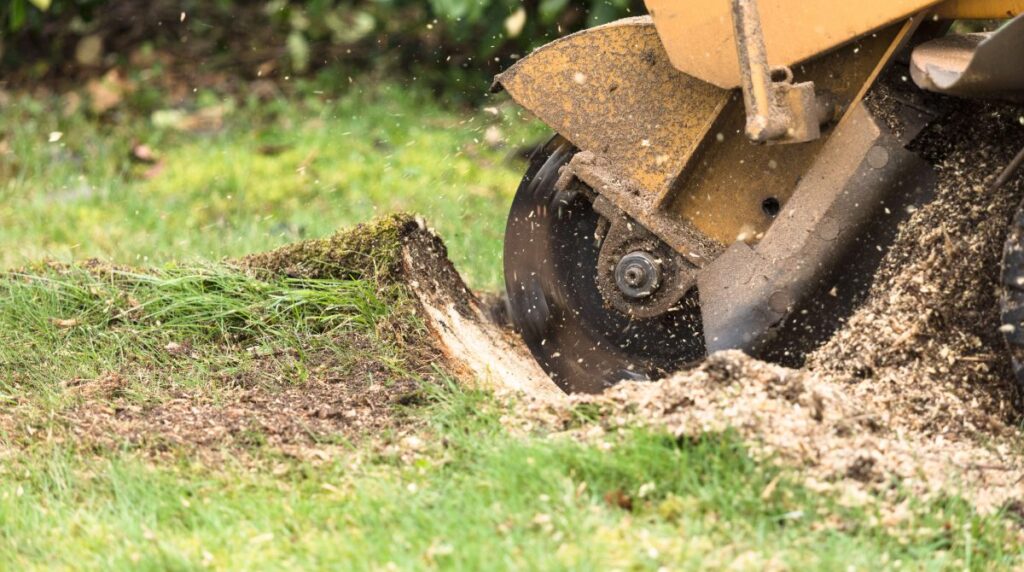
Different Techniques for Stump Removal
When it comes to removing stubborn tree stumps from your property, there are several techniques available to suit your needs. In addition to the commonly used grinding method, there are other options worth considering. Let’s explore these techniques in more detail to help you make an informed decision.
Grinding Method
The grinding method is widely favored for its efficiency and speed. A stump grinder, a powerful machine equipped with rotating teeth, is used to grind away the stump and roots below the surface. The resulting wood chips can be repurposed as mulch or compost, making this method environmentally friendly.
However, it’s crucial to hire an experienced professional to operate the stump grinder. Improper use can lead to injuries or property damage. Safety measures, such as wearing protective gear, should always be followed during stump grinding to ensure a safe and successful removal process.
Chemical Stump Removal
If you prefer a less labor-intensive approach, chemical stump removal may be the ideal solution. This method involves drilling holes into the stump and applying a chemical solution to accelerate decomposition. Over time, the stump will soften and become easier to remove manually or through natural decay.
When using chemical stump removal products, it’s essential to carefully follow the manufacturer’s instructions. These chemicals can be harmful if mishandled, so seeking professional advice or hiring a certified arborist is recommended. Their expertise will ensure that the process is carried out safely and effectively.
Manual Stump Removal
In cases where the stump or tree roots are small, manual removal methods can be employed. This hands-on approach involves digging around the stump, exposing the roots, and cutting or uprooting them using hand tools. While it may require physical strength and patience, manual stump removal can be a rewarding and cost-effective option.
When using tools like axes or shovels, it’s important to exercise caution to prevent accidents. Taking the time to isolate the work area and ensuring the safety of others nearby is crucial. Additionally, wearing appropriate protective gear, such as gloves and safety glasses, is highly recommended.
By considering these different stump removal techniques, you can choose the method that best suits your needs and preferences. Whether you opt for the efficient grinding method, the chemical approach, or the hands-on manual removal, ensuring safety and following proper procedures will lead to successful stump removal and a clear, unobstructed landscape.
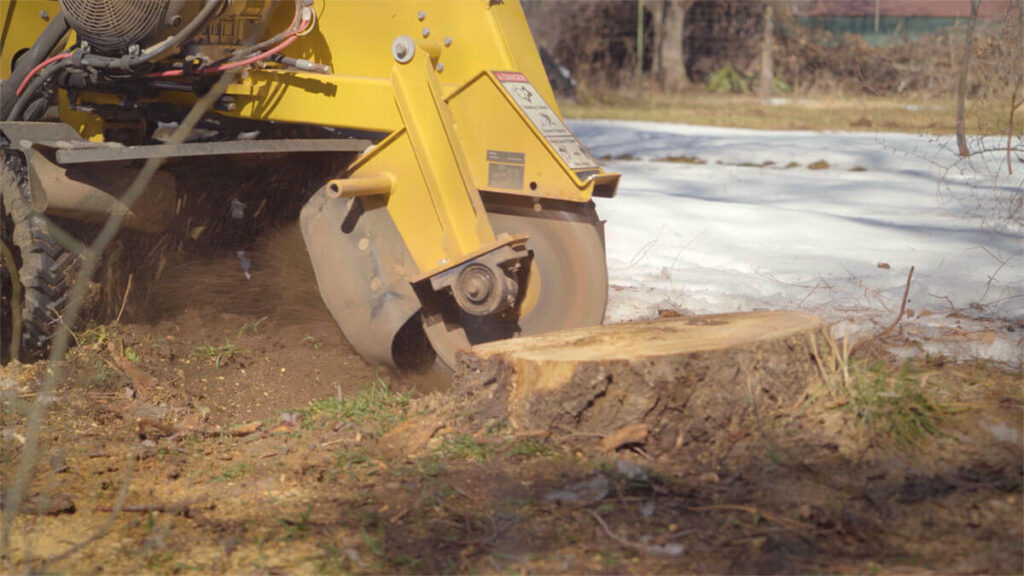
Tree Root Removal Methods
When it comes to dealing with tree roots that are causing damage or posing a threat to structures and utilities, there are several methods available. In addition to the commonly known root cutting technique, there are other approaches that can be employed to effectively address the issue at hand.
Root Cutting
Root cutting is a method that involves carefully severing tree roots to remove them. This technique is typically utilized when the roots are causing damage to structures or interfering with underground utilities. Specialized tools, such as root saws or root pruners, are used to precisely cut through the roots without harming the tree or surrounding plants.
However, it is important to exercise caution when performing root cutting. Cutting too many major roots can destabilize the tree, potentially leading to hazardous situations. To ensure the safety and well-being of the tree, it is highly recommended to consult with an arborist or tree specialist who can provide proper assessment and guidance.
Root Pruning
Another technique used to address root-related issues is root pruning. This method involves selectively cutting or removing specific roots to control their growth in restricted areas. Root pruning is commonly employed in urban areas where space is limited or near construction sites to prevent potential damage to structures.
Root pruning, however, should only be conducted by professionals who possess a good understanding of tree root systems. Improper pruning can have a negative impact on the stability and overall health of the tree. Therefore, it is crucial to seek the expertise of certified arborists or tree specialists to ensure the proper execution of this technique.
Root Digging
In certain situations, complete removal of tree roots may be necessary. This technique, known as root digging, involves excavating the soil around the roots to expose and remove them entirely. Root digging is commonly performed with the assistance of excavation equipment and is most frequently used when the tree itself needs to be removed.
Before opting for root digging, it is crucial to carefully consider the potential impact on the surrounding landscape and the health of nearby trees or plants. To ensure that the process is carried out effectively and with minimal disruption, it is highly recommended to consult with a certified arborist. Their expertise will help in assessing the situation and providing appropriate guidance throughout the root removal process.
By understanding these different tree root removal methods, property owners can make informed decisions when faced with root-related issues. Whether it’s root cutting, root pruning, or root digging, seeking professional advice is always a wise choice to ensure the safety and well-being of both the tree and the surrounding environment.
Safety Measures in Stump and Tree Root Removal
Personal Protective Equipment
Stump and tree root removal can be hazardous if proper safety precautions are not taken. It is vital to wear personal protective equipment (PPE) to protect against potential injuries. PPE may include safety glasses, gloves, ear protection, and sturdy footwear.
By wearing the appropriate gear, you reduce the risk of accidents or harm from flying wood chips, dust, or sharp tools.
Safe Use of Equipment
When using machinery such as stump grinders or chainsaws, it is essential to follow the manufacturer’s instructions and guidelines. Improper use of equipment can lead to accidents, injuries, or damage to property.
Training or hiring professionals with expertise in stump and tree root removal ensures that the equipment is used safely and effectively.
Safety Guidelines and Regulations
It is important to be aware of local safety guidelines and regulations regarding stump and tree root removal. Some areas may require permits or have specific regulations governing the removal of trees and their roots.
Checking with local authorities or consulting arborists familiar with local regulations can help ensure compliance and avoid potential legal issues.
Furthermore, it is worth noting that stump and tree root removal can have environmental implications. In some cases, the roots of trees play a crucial role in preventing soil erosion and maintaining stability. Therefore, it is essential to consider the ecological impact of removing stumps and roots, especially in sensitive areas such as near water bodies or on slopes.
Additionally, it is worth mentioning that certain tree species may have protected status due to their rarity or cultural significance. Before proceeding with stump and root removal, it is advisable to consult with local conservation organizations or experts to ensure compliance with any relevant preservation laws.
By understanding the process and importance of stump and tree root removal, you can make informed decisions to maintain the safety, aesthetics, and functionality of your outdoor space. Whether you choose grinding, chemical removal, or manual methods, it’s crucial to prioritize safety and, when necessary, seek professional assistance.
Taking the necessary steps to remove stumps and tree roots will allow you to enjoy your outdoor space to the fullest, creating a beautiful and hazard-free environment for years to come.

